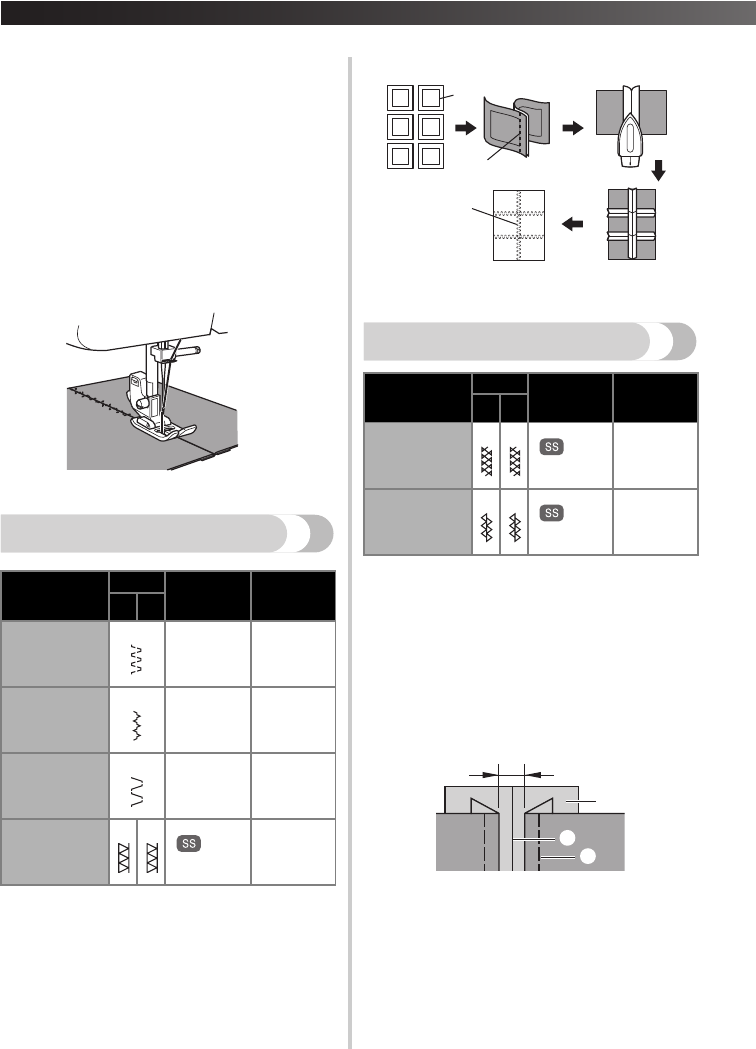
BUILT-IN STITCHES ————————————————————————————————————————————————————————————————————————————————————————————————————————————————————————————————
—
——————————————————————————————————————————————————————————————————————————————————————————
—————
31
■ Joining fabric
You can use the Elastic Stitch to join two pieces of
fabric together and it is very effective when sewing
knitted fabrics. If you are using nylon thread, the
stitch will not be visible.
1
Put the edge of the two pieces of fabric
together and center them under the
presser foot.
2
Sew them together using the Elastic Stitch.
Make sure you keep the two fabric edges
close together.
• Use the basting pins to hold the two fabric
edges close together.
Double action stitching
These stitches are used for joining two pieces of fabric,
such as when making patchwork.
Example: Patchwork with Double Action Stitch
1 Desired seamline
2 Straight Stitch
3 Double Action Stitch
Fagoting
These stitches are used to join two pieces of fabric
while leaving a space between their edges. This stitch is
more decorative when thicker thread is used.
1
Use an iron to fold the two pieces of
fabric along their seams.
2
Baste the two pieces of fabric, separated
by about 2 mm (1/16 inch), onto thin
paper or a sheet of water-soluble
stabilizer.
1 Thin paper or water soluble stabilizer
2 Draw a line down the middle
3 Basting stitching
4 2 mm (1/16 inch)
3
Set the stitch width to “5”.
Stitch Name
Pattern Stitch
Length
[mm (inch)]
Stitch
Width
[mm (inch)]
37 27
Double Action
Stitch
F-3
(1/64-1/8)
3-5
(1/8-3/16)
Bridging Stitch
F-3
(1/64-1/8)
3-5
(1/8-3/16)
Rampart Stitch
F-3
(1/64-1/8)
3-5
(1/8-3/16)
Decorative
Hem Stitch
Fixed
2.5 (3/32)
3-5
(1/8-3/16)
9
10
11
29
24
Stitch Name
Pattern Stitch
Length
[mm (inch)]
Stitch
Width
[mm (inch)]
37 27
Fagoting
Stitch
Fixed
2.5 (3/32)
3-5
(1/8-3/16)
Decorative
Stitch
Fixed
2.5 (3/32)
3-5
(1/8-3/16)
1
2
3
27 22
28
23
1
3
2
4


















